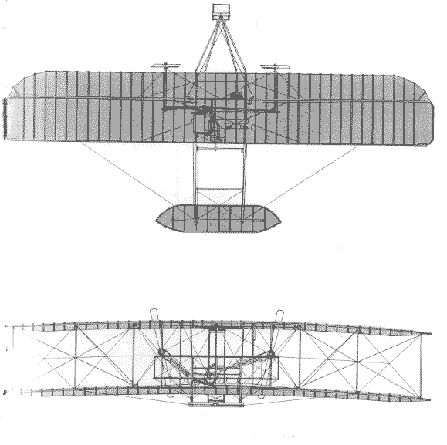
Flight Science & Technology Research Group
Wright Brothers Project
Department Home
Page
Courses
Simulation
Facilities
Feedback: mdw@liv.ac.uk
 This project is aimed at the construction and
evaluation of high-fidelity simulations of the family of Wright
Brothers aircraft between 1900 and 1909, particularly the first
Wright Flyer of 1903.
This project is aimed at the construction and
evaluation of high-fidelity simulations of the family of Wright
Brothers aircraft between 1900 and 1909, particularly the first
Wright Flyer of 1903.
The story of the Wright Brothers aeronautical success provides many lessons for aeronautical engineers today. The Wrights addressed all aspects of construction, aerodynamics design, powerplant and transmission but it was their ability to grasp the significance of flight control in an aerodynamics context that set them apart from their predecessors. The Wrights were aware that active control was more important than stability for their low speed flying machines; they chose to design unstable aircraft to facilitate control and maneuverability and they had drawn their inspiration for watching birds fly.
This project is about a reverse engineering of the Wright Flyers from a flight control standpoint. The Liverpool project will include theoretical aerodynamic analysis using vortex sheet and CFD techniques, wind tunnel testing of the different aerofoil sections developed by the Wrights, development of a comprehensive real-time simulation model of the different aircraft and piloted simulation trials using the Flight Science and Technology Research Group's simulator.
The Liverpool Wright project has relevance to aerospace engineering in the 21st century in two respects, one related to the technological product, the Wright Flyer itself, the other related to the process of invention within a systems engineering context. While the technology components are primarily of historical interest, there are a number of facets that have meaning in modern aircraft design. First, the Wright Flyers were very low speed, very low wing loading aircraft and such designs still have a place in both manned and un-manned ultra-light aircraft today. Second, the application of state-of-the-art analysis methods to the Wright designs, particularly CFD and modern control theory, provide the opportunity to exercise and develop these methods when applied to a very unconventional design; such a process sharpens the tools and also creates opportunity for innovation.
Members:
Mr. Ben Lawrence (Research Student)